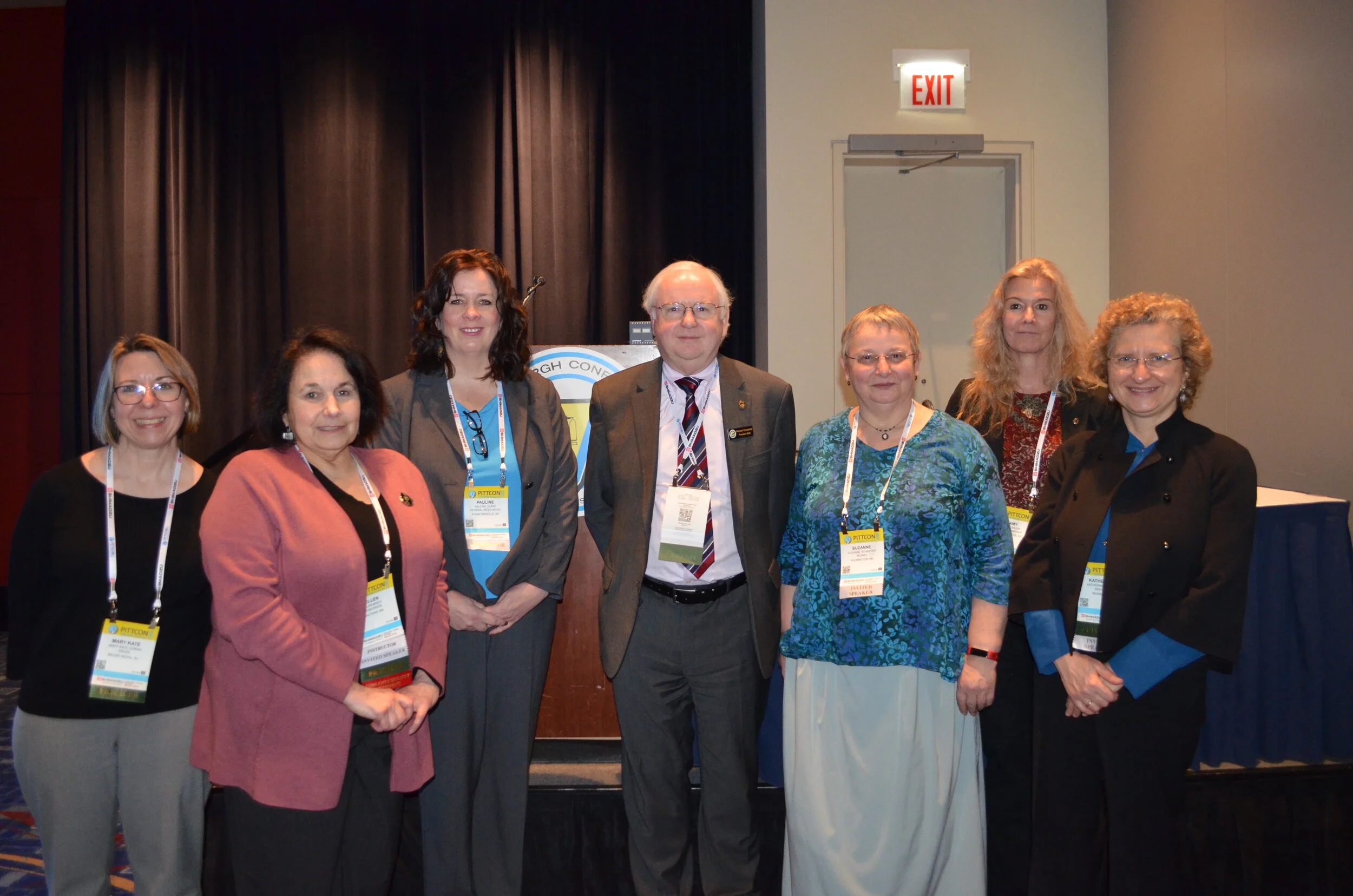March 2020 - Pittsburgh Conference Symposium 2
The second symposium, on the Tuesday of the Conference, was entitled “Portable Spectroscopy in 2020”. In contrast to the first Symposium (all-university, all-male), the second was all-instrumentation and all-female. The session also featured three former SAS Presidents: Mary Kate Donais (chairing) with Ellen Miseo and Katherine Bakeev invited speakers. The first speaker was Pauline Leary (Federal Resources, “The Value of Portable Mass Spectrometry and Gas-Chromatography-Mass Spectrometry”), and she described the applications and limitations of these devices: ‘high pressure mass spectrometers’, and fully integrated GC-MS instruments. These are mostly used within the environmental, first responder and military communities, to detect and identify trace levels of hazardous and dangerous chemicals in the field. Amy Bauer (Ocean Insights, “Analytical "Guns" – Handheld XRF and LIBS, a Comparison”) provided a comparison of the capabilities of the mature handheld x-ray fluorescence (XRF) instruments and the much more recently introduced (and still developing) handheld laser induced breakdown spectroscopy (LIBS) instruments. In particular, HH LIBS instruments address applications for light elements that HH XRF can’t perform. Katherine Bakeev discussed handheld Raman instruments, in the context of advances in instrumentation allowing smaller instruments, fluorescence mitigation and through-package sampling, with an additional emphasis on converting spectra to specific information for the operator. Suzanne Schreyer (Rigaku Analytical Devices, “Library and Method Development - What Lies Behind the Black Box?”) discussed the chemometric software used on handheld instruments to convert that data into information, with examples of the approaches required to develop robust models for both identification (library building) and also quantitative analysis. Finally, Ellen Miseo (Teak Origin, “Portable Near Infrared in Food Analysis – What Exists and Does It Work?) described the performance of some handheld visible and near-infrared spectrometers, some of which are being pitched at the general public almost as ‘magic analyzers’. Unfortunately the lowest cost devices, aimed directly at the general public, have poor and/or irreproducible performance; while those produced by conventional instrument and optics companies, while more expensive (but in this spectral region, still only about $2000), have respectable performance and could be used in analysis of produce for their major components.
In the picture, from left: Mary Kate Donais (St. Anselm’s, Symposium Chair), Ellen Miseo (TeakOrigin), Pauline Leary (Federal Resources), Richard Crocombe (SAS, Organizer), Suzanne Schreyer (Rigaku Analytical Devices), Amy Bauer (Ocean Insights), Katherine Bakeev (B&W Tek). Photo by Luisa Profeta, for SAS.




